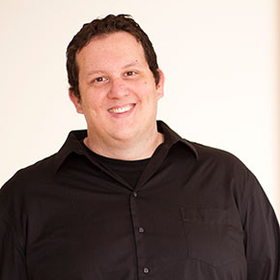

1479 Gortner Avenue
St. Paul, MN 55108
United States
Mikael
Elias
Our Lab investigates the mechanisms by which biological molecules evolve, the molecular basis of their functions, and develop methods for their engineering, with the aim of developing efficient, soft solutions to current or emerging society issues.
Research interests
Cellular phosphate uptake and bacterial virulence
Phosphorus is indispensable for life, but its bio-availability is limited. Consequently, environmental phosphate concentrations are rather low (~1uM or below), whereas intracellular concentrations are very high (> 10mM). The challenge is not only to extract phosphate, but also to discard competing, possibly toxic anions such as arsenate. This is mainly achieved in prokaryotes by the phosphate specific transporter (Pst), an interesting transporter that evolved to address the various challenges of dramatically different environments. Our group is particularly interested in deciphering the molecular mechanism of the phosphate translocation through the membrane. Moreover, we are studying the cellular mechanism of phosphate concentration sensing, and the consequences on the regulation of bacterial growth, and bacterial virulence.
From chemical bonds to phenotypes
Chemical bonds comprise very diverse types of interactions in biomolecules, including weak, strong, short or long range bonds. They are often thousands within a single biomolecules, but just a few, or sometimes one can be directly responsible for a biological function or an organismal phenotype. Our group have isolated some unique chemical bonds in phosphate-binding proteins, responsible for the ability of extreme microbes to thrive in arsenate-rich environment by excluding the latter and binding phosphate instead. These bonds are characterized using ultra high quality, Sub-Ångstrom X-ray crystallography and various spectroscopic methods. They revealed an astonishing and unexpected complexity, being unusually short and energetic. The understanding of the chemistry involved here is a key feature in protein design and bioengineering.
Molecular engineering of enzymes and biotechnological applications
The group is interested in various enzymes, including some promiscuous representatives of lactonases from extremophilic organisms (e.g. PLL). These enzymes, by hydrolyzing bacterial signaling molecules (e.g. acyl-homoserine lactones (AHLs) have the ability to quench the bacterial communication system, also known as quorum sensing. As a result, some bacterial populations treated with such enzymes are impaired for expressing virulence factors or forming biofilms, opening the possibility of developing a broad range of applications, from antibacterial plasters to protective treatments of crops.
Additionally, the group is working to improve through structure-based, combinatorial libraries, the promiscuous phosphotriesterase activity of these enzymes. Such enzyme have the ability to decontaminate the toxic organophosphorous pesticides, and therefore offer a soft, green solution for the bioremediation of these chemicals.
The research carried out in the Lab includes a large combination of techniques, spanning from molecular biology and microbiology, to protein engineering, structural biology and bioinformatics.
Selected publications
2015
Dellus-Gur E, Elias M, Caselli E, Prati F, Salverda ML, de Visser JA, Fraser JS, Tawfik DS. Negative Epistasis and Evolvability in TEM-1 β-Lactamase--The Thin Line between an Enzyme's Conformational Freedom and Disorder. J Mol Biol. 427:2396-409. PMID: 26004540
Hiblot J, Bzdrenga J, Champion C, Chabriere E, Elias M. Crystal structure of VmoLac, a tentative quorum quenching lactonase from the extremophilic crenarchaeonVulcanisaeta moutnovskia. Scientific Reports. 2015; 5:8372. PMID: 25670483
2014
Elias M, Wieczorek G, Rosenne S, Tawfik DS. “The Universality of Enzymatic Rate-Temperature Dependency” (2014) Trends in Biochemical Sciences, 39;1-7. PMID: 24315123
Gonzalez D, Hiblot J, Darbinian N, Miller J, Gotthard G, Amini S, Chabriere E, Elias M. “Ancestral mutations as a tool for solubilizing proteins: the case of a hydrophobic phosphate-binding protein” (2014) FEBS open bio, 4:121-7. PMID: 24490136
2013
Hiblot J, Gotthard G, Chabriere E# and Elias M#. “Differential active site loop conformations mediate promiscuous activities in the lactonase SsoPox”, (2013) PloS One, 8: e7527. PMID: 24086491
Dellus-Gur E, Toth-Petroczy A, Elias M#, Tawfik DS#. “What makes a protein fold amenable to functional innovation? Fold polarity and stability tradeoffs”, (2013) JMB, 425:2609-21. PMID: 23542341
2012
Elias M, Wellner A, Goldin-Azulay K, Chabriere E, Vorholt JA, Erb TJ & Tawfik DS. “The molecular basis of phosphate discrimination in arsenate rich environments”, (2012) Nature, 491(7422):134-7. PMID: 23034649. See also editorial: “Arsenic-life’ bacterium prefers phosphorus after all”, (2012) Nature, doi: 10.1038/nature.2012.11520. Daniel Cressey.
*Ranked 41/100 major scientific discoveries in 2012. See the Discover Magazine ranking.
News: The Scientist; Sciencenews.org; cen.acs.org; mnn.com; Scientific American; sciencedaily.com; Discover Magazine.
Elias M & Tawfik DS. “Divergence and Convergence in Enzyme Evolution: The Parallel Evolution of Paraoxonases from Quorum Quenching Lactonases”, (2012) J Biol Chem, 287:11-20. PMID: 22069329
2011
Alcolombri U, Elias M#, Tawfik DS#. “Directed evolution of sulfotransferases and paraoxonases by ancestral libraries” (2011), JMB, 411;837-53. PMID: 21723874
2009
Liebschner D, Elias M, Fournier B, Scott K, Moniot S, Guillot B, Lecomte C, Chabriere E. “Elucidation of the phosphate binding mode of DING proteins revealed by sub-Ångstrom X-ray crystallography” (2009) JACS, 131:7879-86. PMID: 19445459
2008
Elias M, Dupuy J, Merone L, Moniot S, Lecomte C, Rossi M, Masson P, Manco G, Chabriere E. “Structural basis for a natural lactonase and promiscuous organophosphate hydrolysis activities” (2008), JMB, 379: 1017-28. PMID: 18486146
Education and background
- Ph.D., Aix-Marseille University, France
- FEBS Fellow (2009-2010), Weizmann Institute of Science, Israel; Marie Curie Fellow (2010-2012), Weizmann Institute of Science, Israel